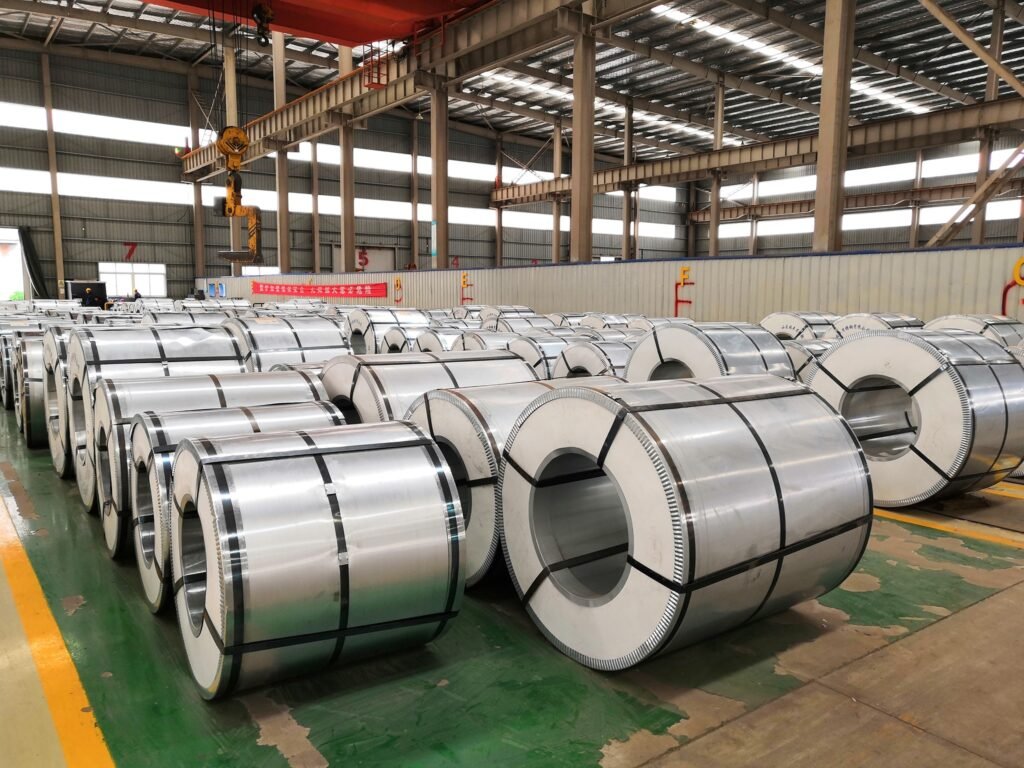What is the difference between galvazied steel and galvalume steel in component content, characteristics and applications etc?
Let’s delve into more detail regarding the differences between galvanized steel and galvalume steel in terms of component content, characteristics, and applications:
Component Content:
Galvanized Steel: Galvanized steel is coated with a layer of zinc. The coating consists entirely of zinc.
Galvalume Steel: Galvalume steel is coated with a combination of zinc and aluminum. The coating typically contains approximately 55% aluminum, 43.5% zinc, and 1.5% silicon.
Characteristics:
Corrosion Resistance:
Galvanized Steel: The zinc coating on galvanized steel provides excellent corrosion resistance, protecting the underlying steel from rust and corrosion.
Galvalume Steel: Galvalume steel offers superior corrosion resistance compared to galvanized steel due to the presence of both zinc and aluminum in the coating.
Heat Reflectivity:
Galvanized Steel: Galvanized steel has limited heat reflectivity properties.
Galvalume Steel: Galvalume steel exhibits high heat reflectivity, making it suitable for applications that require energy efficiency, such as roofing.
Surface Appearance:
Galvanized Steel: Galvanized steel has a shiny, silver appearance.
Galvalume Steel: Galvalume steel has a more matte and dull appearance compared to galvanized steel.
Performance under High Temperatures:
Galvanized Steel: Galvanized steel may experience color changes and minor surface damage when exposed to high temperatures.
Galvalume Steel: Galvalume steel can withstand higher temperatures without significant color changes or surface damage.
To distinguish between galvanized steel and galvalume steel based on their surface, you can look for some key visual characteristics. Here are some factors to consider:
Color: Galvanized steel typically has a bright silver or shiny gray appearance. On the other hand, galvalume steel has a more matte silver or duller gray color.
Coating Texture: Galvanized steel has a smooth, shiny surface due to its zinc coating. Galvalume steel, on the other hand, often has a slightly rougher texture, with a spangled or mottled appearance.
Spangle Pattern: Galvanized steel can exhibit a distinct spangle pattern, which consists of small, visible crystalline formations on the surface. Galvalume steel may also have a spangled appearance, but the spangles are typically smaller and less prominent compared to galvanized steel.
Coating Thickness: Galvalume steel generally has a thinner coating compared to galvanized steel. Although this may not be easily noticeable by visual inspection alone, it can be a factor to consider if you have access to the specifications or if you can measure the thickness accurately.
Corrosion Resistance: Both galvanized and galvalume steel offer corrosion resistance due to their protective coatings. However, galvalume steel is known to provide enhanced corrosion resistance, especially in certain environments. This property may not be evident from surface appearance alone but is an important consideration when assessing the long-term durability of the material.
Galvanized Steel Applications:
Building Construction: Roofing, siding, gutters, and downspouts.
Automotive Industry: Body panels, chassis parts, and reinforcements.
HVAC Systems: Ductwork, vents, and air conditioning units.
Electrical Industry: Cable trays, conduits, and electrical enclosures.
Galvalume Steel Applications:
Roofing: Galvalume steel is commonly used for residential and commercial roofing applications due to its enhanced corrosion resistance and heat reflectivity.
Wall Panels: It is used in the construction of wall panels, particularly in industrial and agricultural buildings.
Automotive Industry: It can be found in certain automotive applications where corrosion resistance and heat reflectivity are essential.
Appliances: Galvalume-coated steel is used in appliances such as ovens, refrigerators, and washing machines.
These applications are not exhaustive and can vary depending on regional preferences and specific industry requirements. When selecting between galvanized steel and galvalume steel, it’s important to consider factors such as the desired level of corrosion resistance, heat reflectivity, aesthetic appearance, and the intended application’s environmental conditions.


